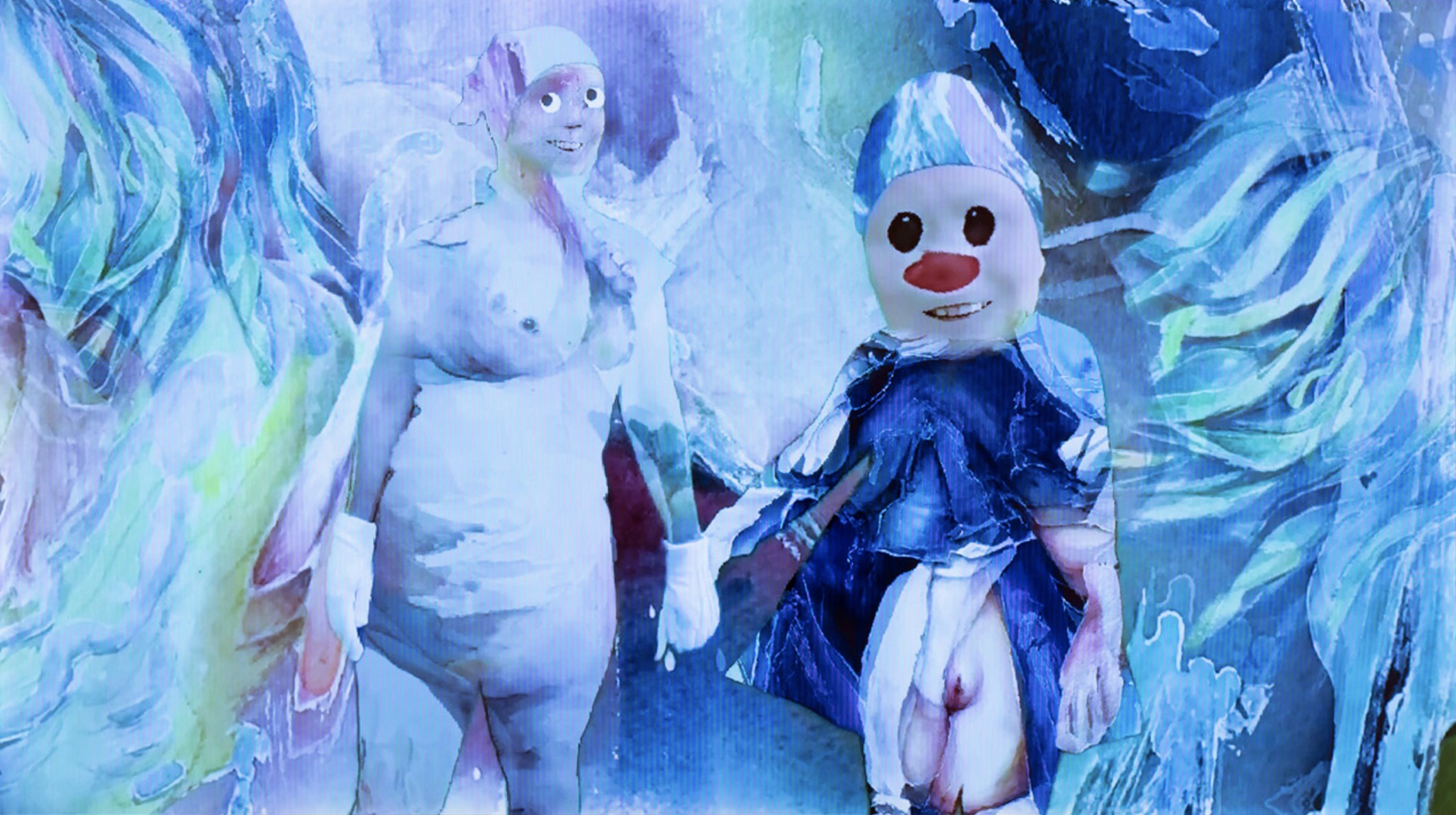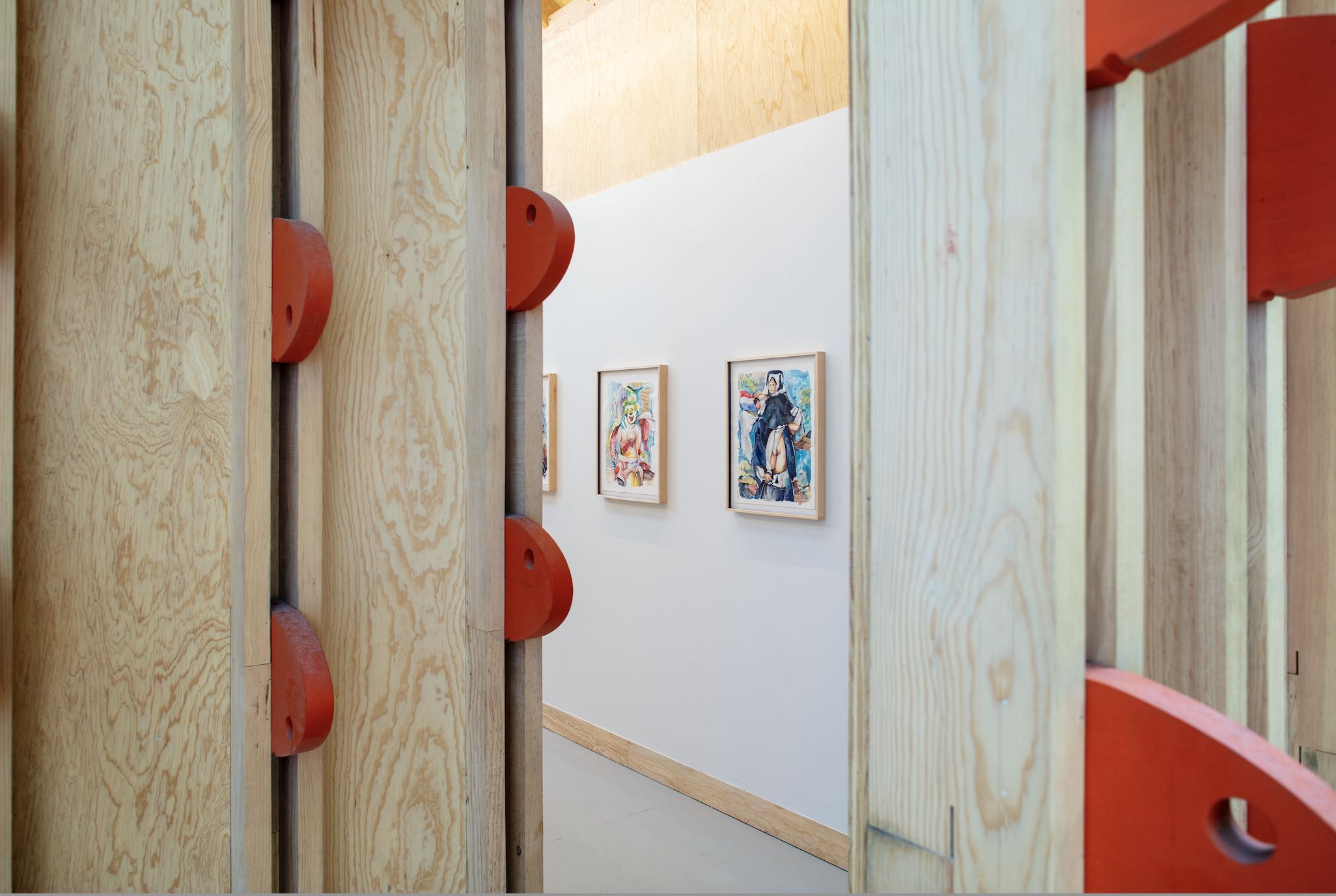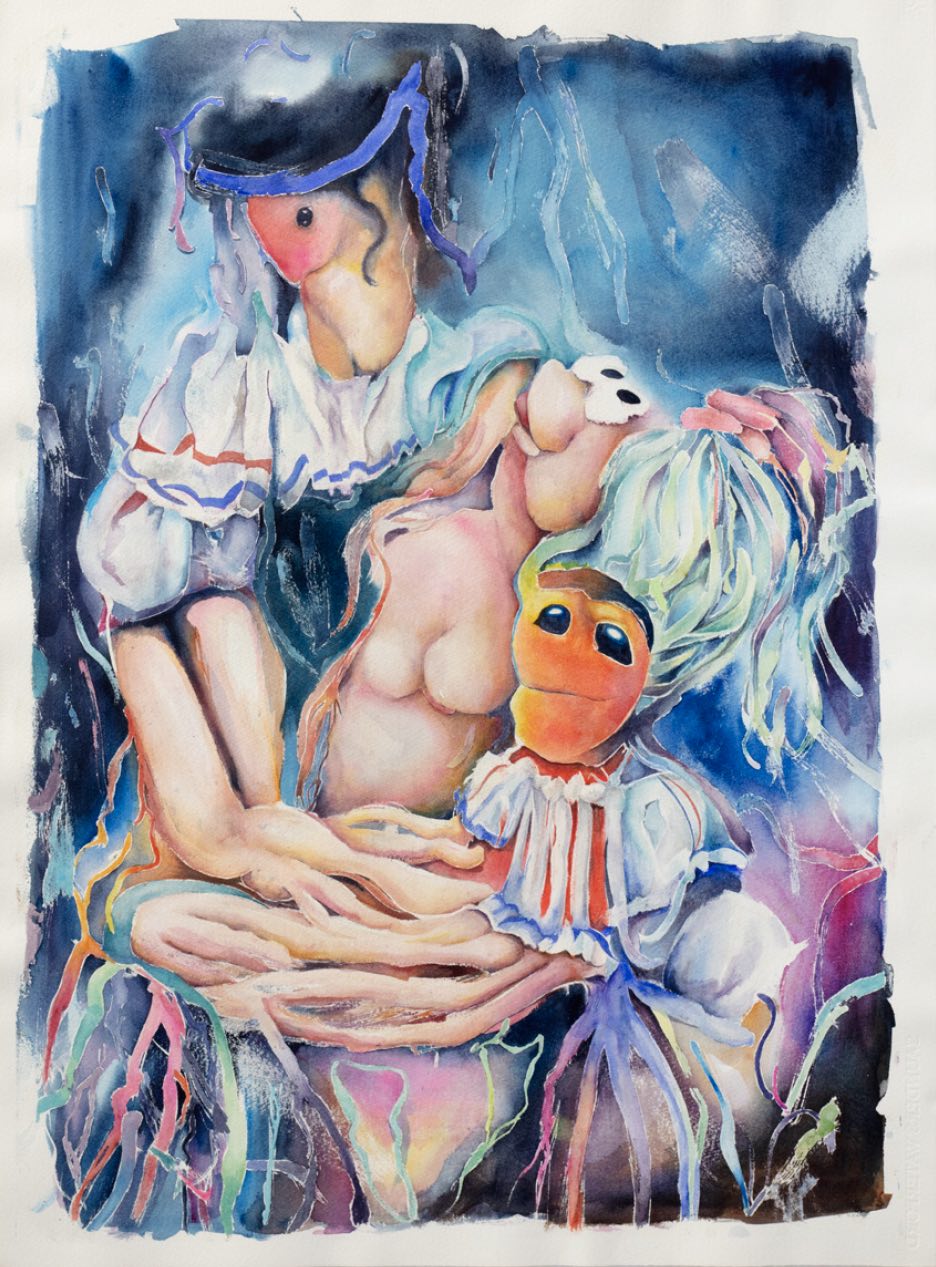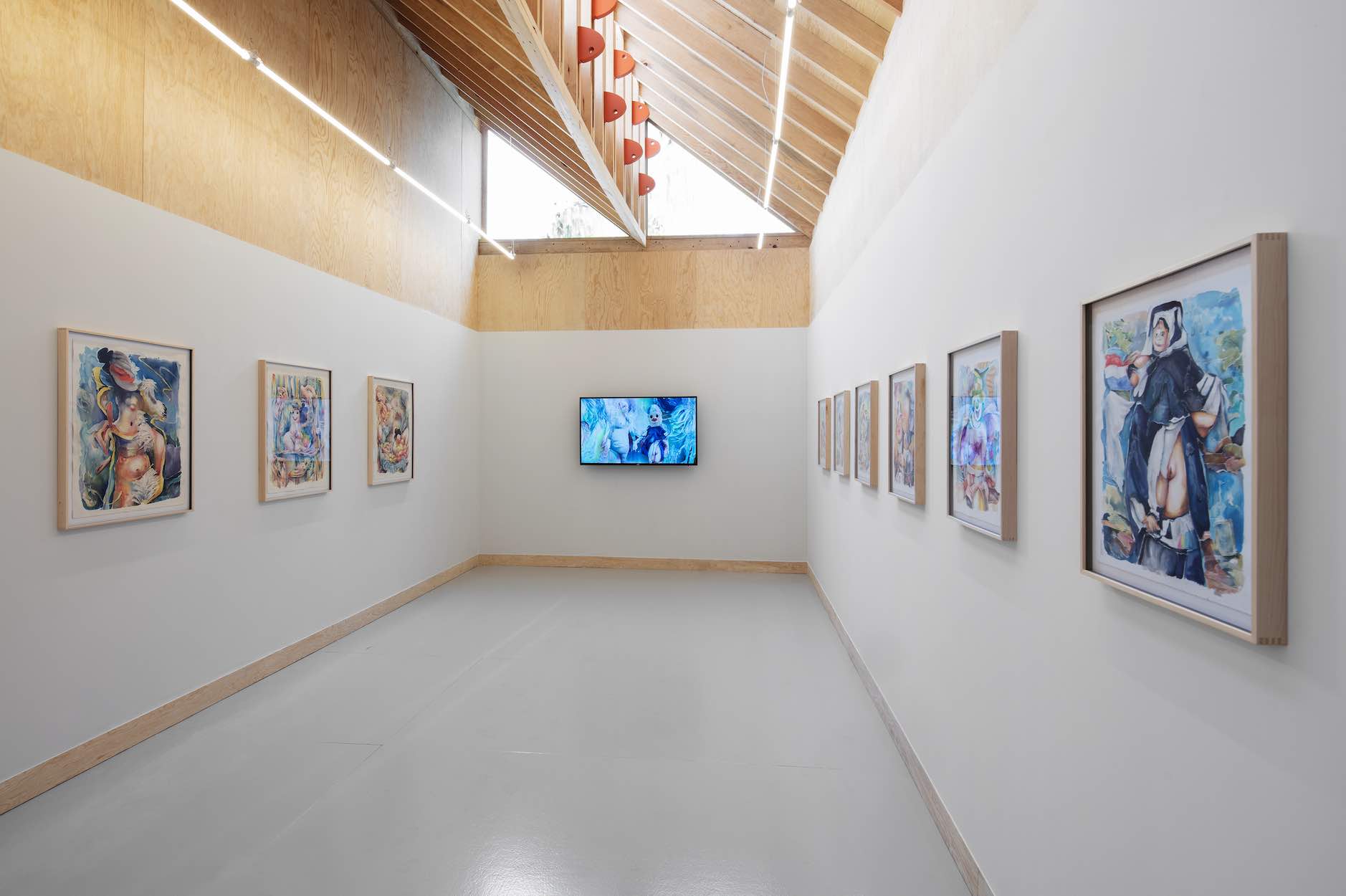
Review
Is this art? Or is it a digital jail? I’m not sure, but I know it’s creepy*. On Beth Frey
by Nicolas Barraza
At Pamela Weissenberg
Reading time
6 min
“Their minds are out on bail now, and real is only what it seems, and all the puppets in this digital jail”: so sings Laurie Anderson in The Puppet Motel, the song that inspires and partially gives the title to the exhibition by Canadian artist Beth Frey, Meet Me at the Puppet Motel, at the new conceptual space, Pamela Weissenberg. Created by Pamela Echeverría (founder of the gallery LABOR) and Rudy F. Weissenberg (partner and co-founder of AGO Projects), the space’s mission is to be critical and open to debates and reflections on what is happening today. The proposal resonates with what the curator Catherine David said around 1997, in the context of documenta X, calling for a critical engagement with the social, political, economic, and cultural issues of the time.
The space, located in the garden of the gallery LABOR*1, was intentionally designed on an intimate scale, seeking to provoke a deeper reaction in the viewer. Likewise, it is clear why Beth Frey is the artist selected to inaugurate the pavilion: she is known for tackling such topics as gender, the body, social media, and mental health, all through her wacky, cartoonish, and twisted sense of humor. For this exhibition, the artist presents a series of ten watercolors and a video, in which she takes advantage of technology as a creative tool, more specifically DALL-E and Nightcafe: free applications that generate images through text via Artificial Intelligence.

The characters that Frey presents belong to the world that she has been creating throughout her career, a grotesque and peculiar universe inhabited by strange figures that defy and free themselves from stale traditional expectations about gender, sexuality, and the body. The images are as disconcerting as they are provocative, as well as immersive and captivating: a disturbing and colorful nightmare. They remind me of the delirious and overwhelming sensation produced by the paintings of Cecily Brown and Fernando Zarur; there is so much happening, so many places to turn to, and it is in that confusion that time seems to stop, and one is then transported to the worlds offered by these artists.
I think of the moment when one unlocks a cell phone and enters social networks: bottled up, time passes without realizing it. You’re no longer in the same place. Suddenly, we find ourselves trapped in a contrived digital universe to which we are all addicted. Here the aforementioned dimension of space plays a very important role, facilitating immersion in Frey’s distorted world. The viewer is instantly hooked and time is forgotten, haunted, or ignored. This immediate entry into one’s imagination is rarely experienced so effectively. Previously, this is what happened to me upon entering The Beanery (1965), a work by Edward Kienholz for which he replicated a bar in Los Angeles (including its sounds and smells) and in which all the individuals had clocks instead of faces; and on another occasion upon visiting we still here, there (2018), a site-specific installation at MOCA, which served as a visual archive of daily life in the neighborhoods of South Central Los Angeles. Frey is so punctual and assertive in the images she presents that a monumental installation is unnecessary for entering that blurry and grotesque place.

Those figures of distorted bodies, incomplete limbs, and disfigured faces, which the artist puts in her watercolors, led me to reflect for several days on the current state of society in terms of cosmetic surgery and the extremes to which it can reach. It has become so common to shape and alter the body and face, depending on what’s trending and what’s considered beautiful or attractive at a given moment! And that’s not even to mention digital manipulation.
We’re already in that digital jail of Anderson’s song, one that keeps society at the mercy of the instant and ephemeral fame of social networks. There has been a loss of judgment and criticality regarding what can be harmful to health, all under the obsession with making information go viral in order to achieve an empty social validation: like the TikToker Nikocado Avocado, known for his mukbang videos in which he eats brutal amounts of junk food, taking him to the point of gaining 100 kg in front of an audience that can’t stop watching.
What is more, the growing use of Artificial Intelligence as a creative tool is a somewhat controversial and still poorly regulated issue. It happened that a few years ago YouTube refused to load a video in which Jay-Z recited Shakespeare and in which the audio was created by AI. The debate between originality and authorship is constant. On the other hand, it’s interesting to reflect on the relationship between machine and human being, between codes and emotions, as well as their ability to enhance a work of art, like with Omnia per Omnia by Sougwen Chung: a series of collaborative paintings between the artist and some small robots programmed to paint the flow of people in a city. Nevertheless, these technologies also trivialize the concept of creativity, as is the case with billionaire Reid Hoffman, co-founder of LinkedIn, who has auctioned off a series of NFTs in Solana, created using DALL-E 2.*2

Against this background, it has become necessary and prudent to have Frey’s sense of humor and wonderful use of AI both in enhancing her work and in opening up a severe debate around it. There were so many feelings and thoughts that came to me upon leaving the pavilion, and as the days go by Beth’s world leaves me with more questions than answers. It’s terrifying to know that this twisted place is a product of the reality that we have constructed for ourselves. “Cause they don’t know what’s really real now, they’re having fourth dimensional dreams,” as Anderson sings.
Translated to English by Byron Davies
*This article’s title was generated using Rytr, a free platform that uses AI to generate texts.
1: Pamela Weissenberg’s press release on Meet Me at the Puppet Motel by Beth Frey.
2: In an interview with Bloomberg (“Reid Hoffman’s AI-Powered Solana NFTs”), the billionaire has said that you don’t need visual creative skills to create something in DALL-E.
Published on September 28 2022